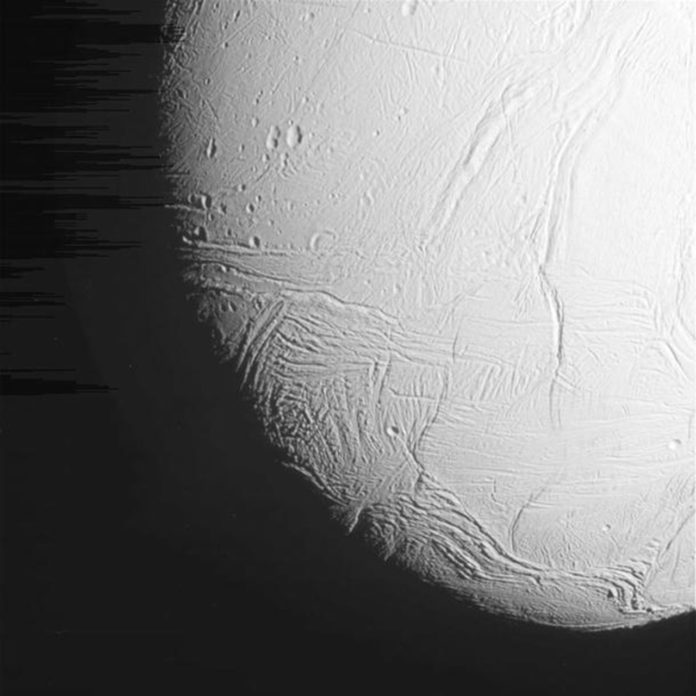All life on Earth is built of organic molecules, so the primordial sources of reduced carbon remain a major open question in studies of life’s origin.
In modern life, most of these organic molecules originate from the reduction of carbon dioxide (CO2) through several “carbon-fixation” pathways (such as photosynthesis in plants). But most of these pathways either require energy from the cell to work or were thought to have evolved relatively late.
So how did the first organic molecules arise before the origin of life?
To figure out the answer, Museum Gerstner Scholar Victor Sojo and Reuben Hudson from the College of the Atlantic in Maine developed a setup based on microfluidic reactors, tiny self-contained laboratories the behavior of fluids — and in this case, gases as well — on the microscale. Instead of bubbling the gases within the fluids before the reaction, the new reactor’s main innovation is that the gases themselves drive the fluids, so there is very little chance for them to escape.
The specialists utilized their design to combine hydrogen with CO2 to produce an organic molecule called formic acid (HCOOH). This synthetic process looks like the only known CO2-fixation pathway that doesn’t need a supply of energy, called the Wood-Ljungdahl acetyl-CoA pathway. Thus, this cycle looks like reactions that may have occurred in ancient oceanic hydrothermal vents.
Sojo said, “The consequences extend far beyond our biosphere. Similar hydrothermal systems might exist today elsewhere in the solar system, most noticeably in Enceladus and Europa — moons of Saturn and Jupiter, respectively — and so predictably in other water-rocky worlds throughout the universe.”
Laurie Barge from NASA’s Jet Propulsion Laboratory, an author on the study, said, “Understanding how carbon dioxide can be reduced under mild geological conditions is important for evaluating the possibility of an origin of life on other worlds, which feeds into understanding how common or rare life may be in the universe.”
Scientists turned CO2 into organic molecules using relatively mild conditions, which means the findings may also have relevance for environmental chemistry. In the face of the ongoing climate crisis, there is an ongoing search for new methods of CO2 reduction.
Shawn E. McGlynn, also an author of the study, based at the Tokyo Institute of Technology, said, “The results of this paper touch on multiple themes: from understanding the origins of metabolism to the geochemistry that underpins the hydrogen and carbon cycles on Earth, and also to green chemistry applications, where the bio-geo-inspired work can help promote chemical reactions under mild conditions.”
Other authors on this study include Ruvan de Graaf and Mari Strandoo Rodin from the College of the Atlantic, Aya Ohno from the RIKEN Center for Sustainable Resource Science in Japan, Nick Lane from University College London, Yoichi M.A. Yamada from RIKEN, Ryuhei Nakamura from RIKEN and Tokyo Institute of Technology, and Dieter Braun from Ludwig-Maximilians University in Munich.
This work was supported in part by NASA’s Maine Space Grant Consortium (SG-19-14 and SG-20-19), the U.S. National Science Foundation (1415189 and 1724300), the Japan Society for the Promotion of Science (FY2016-PE-16047 and FY2016-PE-16721), the National Institutes of Health’s National Institute of General Medical Sciences (P20GM103423), the European Molecular Biology Organization (ALTF- 725 1455-2015), the Institute for Advanced Study in Berlin, and the Gerstner Family Foundation.
Journal Reference:
- Reuben Hudson, Ruvan de Graaf, Mari Strandoo Rodin, Aya Ohno, Nick Lane, Shawn E. McGlynn, Yoichi M. A. Yamada, Ryuhei Nakamura, Laura M. Barge, Dieter Braun, Victor Sojo. CO2 reduction driven by a pH gradient. Proceedings of the National Academy of Sciences, 2020; 202002659 DOI: 10.1073/pnas.2002659117
